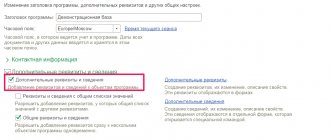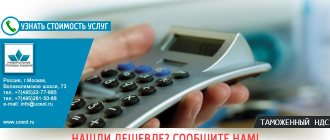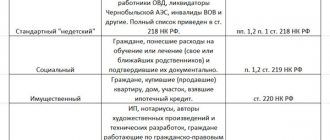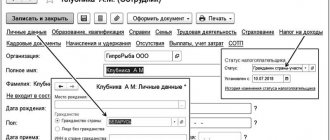Statement on indirect taxes: concept and purpose
An application for the import of goods and payment of indirect taxes (hereinafter referred to as the application) is one of the main documents:
- processed by importers of goods from EAEU countries;
- certifying the fact of import of goods into the Russian Federation from the territory of a member state of the EAEU and payment of indirect taxes;
- provided to tax authorities simultaneously with the declaration of indirect taxes and other related documents;
Find out how many states are currently part of the EAEU from the material.
The main purpose of the application is to confirm the fact of payment of indirect taxes and exchange this information with the tax authorities of the country from which the goods were imported.
We tell you which budget indirect taxes are included in here.
Application for import of goods and payment of indirect taxes in 2020
The Protocol of December 11, 2009 (as amended on December 31, 2014) “On the exchange of information in electronic form between the tax authorities of the EAEU member states on the paid amounts of indirect taxes” (hereinafter referred to as the Protocol) determined the form of the application for import and the procedure for filling out this document.
The application is drawn up by importers of goods from EAEU member countries and is submitted simultaneously with the tax return and a package of supporting documents.
The application form is approved by Appendix No. 1 to the above Protocol and consists of 3 sections.
- The first section is filled out by all import participants. It should reflect the following information:
- Seller and buyer data;
- Contract number and date;
- Location of the seller and buyer;
- List of imported goods indicating the data of shipping documents, invoices, quantity, cost and amount of value added tax;
- Date of compilation, name and signature of the manager.
- The second section is filled out upon receipt of the document by the Federal Tax Service employee and includes information about the fact of acceptance of the application and payment of indirect taxes. Moreover, the tax authorities will put a stamp on payment after checking the application for the import of goods and payment of indirect taxes within 10 days from the date of receipt.
- Completing the third section is necessary in certain cases. Their full list is reflected in paragraph 4 of Appendix 2 to the Protocol. Thus, cases of filling out this section include the sale of goods to the buyer through intermediaries (commission agents).
Additionally, an annex to the application can be filled out (if more than 3 persons are involved in the supply, etc.).
The rules for filling out the document are reflected in Appendix 2 of the Protocol. A separate application must be completed for each agreement.
An application is submitted in 4 copies, 3 of which are then returned to the applicant, 1 remains with the tax authorities.
Application structure
The application contains 3 sections and 1 appendix:
- in section 1, information is entered by the buyer or intermediary (if, according to the legislation of the state into whose territory the goods are imported, these persons pay indirect taxes);
- section 2 is intended to mark the registration of the application with the tax authority;
- section 3 is not always filled out and not by everyone - only in certain cases listed in clause 4 of the Rules for filling out an application for indirect taxes (Appendix No. 2 to the Protocol on the exchange of information dated December 11, 2009);
- the application is drawn up if the number of delivery participants is more than three.
Fill out a variety of tax applications using materials from our website:
- “Application for transition to the simplified tax system in 2018-2019 (sample)”;
- “We are preparing an application for personal income tax refund (sample, form)”.
Algorithm for filling out an application
When submitting an application, use the following algorithm:
- Download the application form from our website.
- For each supply agreement, fill out a separate application.
- Information about goods of the same type imported under different invoices should be reflected in different rows of the tabular part of Section 1.
- Use the hints when filling out individual columns in section 1:
- Do not fill out Section 2 (this is the responsibility of the tax authorities), but be sure to include it in the document.
- Section 3 is completed only if the goods are sold to the buyer through a commission agent (attorney or agent) or if the sale of goods is not subject to indirect taxes under the legislation of the seller’s country, since the territory of the seller’s country is not recognized as the place of sale of such goods.
The following publications will help you understand line by line filling out tax and other reports:
- “How to correctly fill out section 2 in the 6-NDFL calculation?”;
- “Procedure and sample for filling out Form 85-K (nuances)”;
- “Sample of filling out form 4-FSS”.
How to avoid mistakes when completing and submitting an application?
To avoid errors associated with the preparation and submission of an application:
- before sending it to the controllers, check that there are no discrepancies in the information specified in the application and the indirect tax return (including the amount of VAT payable);
- check the data on the paper version of the application and its electronic form - they must be completely identical;
- pay the VAT amount in full and on time, otherwise the fact of payment will not be confirmed by the tax authorities;
- check the correctness of the calculation of the tax base used to calculate indirect taxes in order to avoid underpayment.
Errors in the application may result in the refusal of the controllers to register the application and, as a result, negative tax consequences for the seller and the buyer (impossibility of deducting import VAT and confirming the zero tax rate).
On our website you will find useful information about types of errors and methods for correcting them:
- “How and what errors can be corrected in the SZV-M report?”;
- “Client-bank system - synchronization error”.
What documents to submit to the Tax Inspectorate when importing goods from the EAEU
An importer who imported goods from member states of the EAEU, no later than the 20th day of the month following the month in which the imported goods were accepted for accounting, must pay the calculated VAT <*>.
During the same period, a VAT return is submitted to the Tax Inspectorate at the place of registration, which reflects the tax base and the amount of “import” VAT. Part II of the declaration is completed monthly, if there is a fact of import of goods from the EAEU <*>.
The following documents must be attached to Part II of the VAT return <*>:
— application for the import of goods and payment of indirect taxes.
An application for the import of goods confirms the fact of tax payment (exemption or another method of fulfilling the payment obligation). You can send an application for the import of goods electronically through your personal account. On paper, the application is submitted to the Tax Inspectorate in four copies, with a version of the application attached on removable electronic media (disk, flash drive). The tax authority considers an application for the import of goods within 10 working days <*>.
Note : The application for the import of goods is adjusted if, after the month in which the imported goods were accepted for accounting, their price has increased or a partial return has been made due to inadequate quality and (or) configuration <*>;
- documents confirming the purchase and import of goods (agreements (contracts), taking into account changes, additions and annexes to them, invoices, goods, waybills, etc.) (certified copies).
Documents can be submitted to the tax authority both on paper and in electronic form (in the form of scanned images) in the form of tif or pdf files <*>.
If the Russian seller does not issue an invoice (for example, due to the use of a simplified taxation system), then another document issued (issued) by the seller confirming the cost of imported goods is submitted to the tax authority.
Thus, a universal transfer document (hereinafter referred to as UTD) can be used - a document containing all the mandatory details of invoices and primary accounting documents provided for by Russian legislation. Registration of UTD does not require the issuance of a separate invoice and a separate shipping document when shipping goods <*>.
If a Russian seller does not use UTD and is not a VAT payer due to the application of special tax regimes, he is obliged to issue a shipping document <*>;
— bank statement (certified copy) confirming payment of tax on imported goods, or another document confirming the fulfillment of tax obligations to pay VAT.
In practice, a payment instruction (payment order) for tax payment is more often submitted. It can be submitted both on paper and in electronic form (in the form of scanned images) in the form of tif or pdf files <*>.
If the obligation to pay “import” VAT is fulfilled by offset, then instead of a bank statement, decisions made by the tax authority on offset of overpaid (collected) amounts of taxes, fees (duties) or the amount of the difference between the amount of tax deductions and the total amount of calculated VAT are submitted <*> .
If the imported goods are exempt from VAT, then a bank statement is not provided;
- Announcement.
It is submitted in cases where three or more persons are involved in a transaction <*>. For example, a Belarusian organization bought goods from a seller from Kyrgyzstan, but will import them from Kazakhstan. Then the supplier from Kyrgyzstan must provide the Belarusian organization with an information message about the seller from Kazakhstan from whom he bought this product.
The information message must contain information about the taxpayer of a third state - a member of the EAEU, from whose territory goods are exported, and information about the agreement (contract) concluded with the taxpayer of this third state - a member of the EAEU, on the acquisition of imported goods <*>.
The message form is arbitrary. A message from an organization must be signed by its leader and certified by a seal. The message from the individual entrepreneur is signed by him personally. An information message in a foreign language is submitted to the inspectorate with a translation into Russian.
As for the ESFF. For goods imported from the EAEU, the importer creates and sends an ESCF to the Portal. ESCHF is sent after payment (offset) of VAT and submission of an application for the import of goods:
- no later than the 20th day of the month following the month of registration of imported goods - upon timely payment (credit) of the tax and submission of an application for import to the tax authority;
- no later than the 20th day of the month following the month in which the tax was finally paid and the import application was submitted - in case of payment (offset) of VAT in violation of the deadline <*>.
Read this material in ilex >> *
* following the link you will be taken to the paid content of the ilex service
How are copies of the application distributed?
The importer will be required (clause 1 of the Rules for filling out the application - Appendix No. 2 to the Protocol on the exchange of information between the tax authorities of the EAEU member countries dated December 11, 2009):
- 4 paper copies of the application + application in electronic form; or
- electronic application signed with digital signature.
For what purpose the digital signature obtained from the Federal Treasury is used, find out from the publication.
Distribution of paper versions of the application:
- 1 - tax authorities take it;
- 1 - the importer keeps it;
- 2 - the importer sends it to his counterparty (to confirm the validity of applying the zero VAT rate).
Learn about ways to submit various reports to controllers from the following materials:
- “How do you submit SZV-M reports on paper?”;
- “Electronic reporting via the Internet - which is better?”.
Results
If you imported goods from Belarus, Kazakhstan, Kyrgyzstan or Armenia, fill out an application for indirect taxes. It certifies the fact of import of goods from the EAEU and payment of indirect taxes.
The document has 3 sections and an appendix. Section 2 is intended for marking by the tax authority, and in the rest the importer reflects information about the buyer, supplier, goods, etc.
The application is submitted to the tax authorities along with the declaration and other documents.
You can find more complete information on the topic in ConsultantPlus. Free trial access to the system for 2 days.
Receipt of imported goods
Let's assume we have goods coming from Belarus. To correctly process a receipt transaction, you must correctly create a counterparty card:
As you can see, in the counterparty card in 1C 8.3 there is the attribute “Country of registration”. If you fill it out with a country other than Russia, then instead of the fields “KPP” and “OGRN”, fields for filling in “Tax number” and “Registration number in the country of registration” will appear. These details will be needed to fill out the “Application for Import of Goods”.
In addition, please note that the “Nomenclature” directory element now has the “Commodity Nomenclature of Foreign Economic Activity” attribute, which also needs to be filled out:
After creating a foreign counterparty, we proceed to filling out the invoice. It is filled out as a regular admission document:







